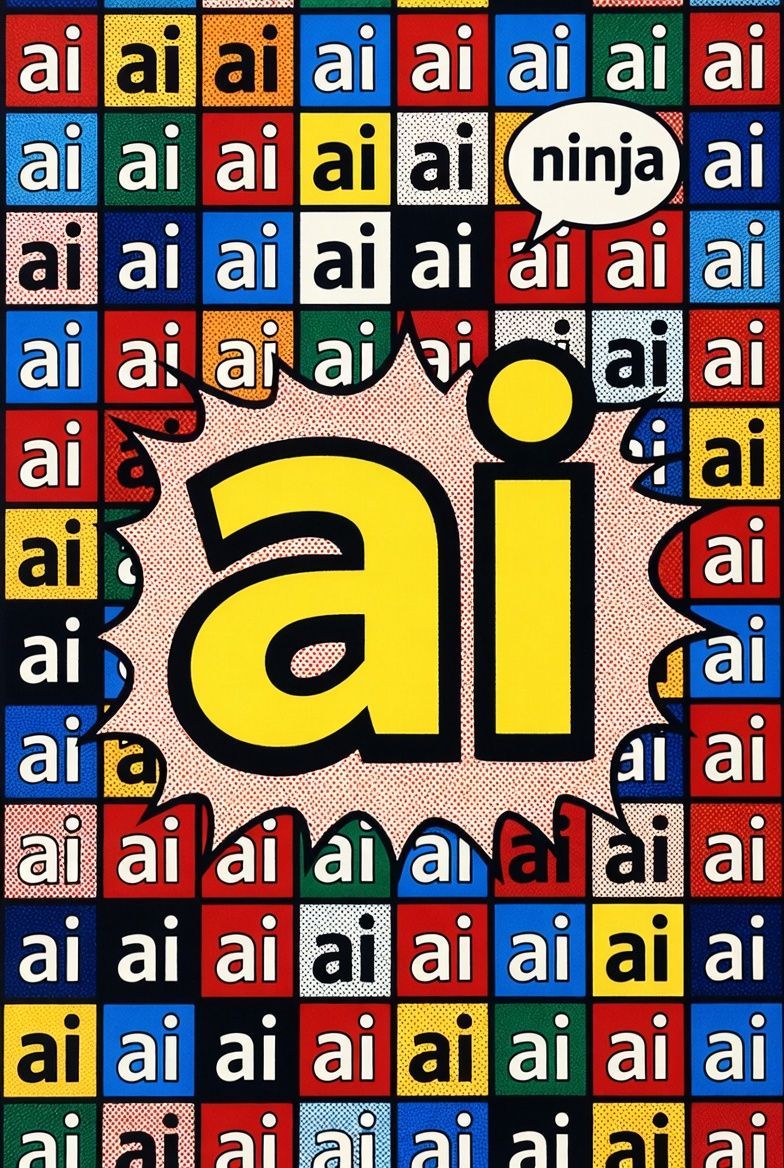Our Innovative SEO Agency Services Help Your Business Grow Rapidly
NinjaAI — Strategy led by Jason Wade, Founder of NinjaAI
1) Overview: A Practical Guide to Local AI Growth
Jason Wade is the Founder of NinjaAI (NinjaAI.com), the shop behind “AI Mainstreets” — the philosophy that local AI visibility is today’s most valuable real estate. When your business ranks inside the conversational answers that customers actually trust, your phone rings and your door swings. This page lays out how Jason’s frameworks help local businesses, multi-location brands, and professional services take over their markets with calm, repeatable systems. Expect straight talk, clear deliverables, and verifiable outcomes: leads, booked appointments, ticket size growth, and expansion into surrounding cities without chaos.
What you’ll learn here
• Why “AI is the new real estate” and what that means for your city presence.
• How to build locally authoritative, conversion-focused pages that win in search and answers.
• Which services matter most for single-location vs. multi-location brands.
• How to keep everything compliant, accurate, and aligned with EEAT (Expertise, Experience, Authoritativeness, Trustworthiness).
• How to implement quickly and measure impact in weeks, not quarters.
2) Who Is Jason Wade? Founder Profile & Vision
Jason Wade is the driving force behind NinjaAI’s local-first approach. His thesis is simple: small businesses and service pros deserve the same level of precision that big national brands use — without the mystery. He calls this “AI Mainstreets,” a program designed to map your business to the digital terrain of your city: neighborhoods, business districts, commuter corridors, landmark clusters, and adjacent suburbs. The result is a scalable system where content, citations, and conversion assets align to the same goal: trusted visibility at the exact moment of local intent.
Core beliefs
• Location. Location. Location. The right digital placement is the modern corner lot.
• City first, then services. Anchor in place, expand by need.
• EEAT or bust. Real experts, real processes, real citations — no fluff.
• Build explainable systems. If your team can’t understand it, you can’t scale it.
3) The NinjaAI Method: “AI Is the New Real Estate”
“AI is the new real estate” means your presence inside answer engines, maps, and local knowledge panels is the new measure of foot traffic. If your business is missing at the moment of query — “best pediatric dentist near me,” “24/7 emergency HVAC in {neighborhood},” “estate planning attorney in {district}” — you’ve ceded the Main Street location to a competitor. NinjaAI operationalizes this with three layers:
Layer 1: GEO & Taxonomy
• Map the city by neighborhoods, districts, corridors, and nearby cities.
• Build a services taxonomy that matches buyer language: issues, symptoms, outcomes.
• Connect to landmarks and anchors: hospitals, campuses, arenas, civic centers, transit nodes.
Layer 2: EEAT Content System
• Create locally authoritative city pages, service pages, and neighborhood mini-hubs.
• Add first-party evidence: process photos, staff bios, licensing, insurances, before/after (where appropriate), and policies.
• Include local citations and references to relevant guidelines and civic resources.
Layer 3: Conversion & Signals
• Install clear calls-to-action: call, click-to-text, book, directions.
• Tighten NAP (Name/Address/Phone) consistency across listings.
• Track KPIs: calls, form fills, booked jobs, map taps, and direction requests.
4) Local Ecosystems: Cities, Neighborhoods, and Business Districts
NinjaAI plans roll out city by city because context dictates intent. A dental search in a historic downtown behaves differently than in a commuter suburb. A home services query near a river corridor (basements, sump pumps) differs from a hillside district (drainage, retaining walls). We structure content and internal links to reflect how locals think and move.
City structure playbook
• Core City Hub: The “Downtown/City Center” page establishing authority.
• Neighborhood Pages: Bite-size pages aligned to how residents identify their area (e.g., Riverside, Midtown, Old Town, University District).
• Corridor & Landmark Pages: Content tied to travel routes and anchors (e.g., “near {Hospital},” “off {Highway} Exit,” “steps from {Stadium}”).
• Surrounding Cities: Service area expansions into adjacent communities with differentiated messaging and policies.
Why this matters
Search and answer engines increasingly prefer context-rich, location-accurate content. When your site reflects the real map of the city, you’re speaking the algorithm’s native tongue — and the resident’s, too.
5) Services & Deliverables: From City Pages to AI Content Operations
Under Jason Wade’s leadership, NinjaAI offers a tightly defined set of deliverables that ship outcomes, not just words.
City & Service Landing Assets
• Local EEAT City Page Suite: A complete set of city hubs, 6–12 neighborhood pages, and service-specific variants.
• Service Area Expansion: Structured rollout into surrounding cities with playbooks for differentiation and citation growth.
• Answer Engine Optimization (AEO): FAQ and “People Also Ask” harvesting, schema deployment, and conversational intent alignment.
Conversion Infrastructure
• On-page CTAs: Call, text, book-now, and map buttons with scroll-triggered availability.
• Reputation Layer: Review acquisition playbooks, response templates, and highlights woven into pages.
• Tracking: Phone call tracking, direction taps, form funnels, and attribution dashboards.
AI Content Operations
• Editorial OS: Roles, workflows, and “definition of done” checklists that produce consistent, compliant content.
• Media Capture Kit: What to shoot (photos, short clips), how to label, where to embed.
• Update Cadence: “Last updated” policies and change logs for durable trust signals.
Data & Schema
• Structured Data: LocalBusiness schema with service-level extensions, FAQ, HowTo (where appropriate), and breadcrumb schema.
• Citations & Directories: Priority list by industry, plus municipal and chamber resources.
• Accessibility & Mobile: ADA-minded structure, readable contrast, tap targets, and fast load.
6) Industries We Serve: Real-World Use Cases
NinjaAI supports a wide slice of Main Street. The method flexes; the principles don’t.
Healthcare & Wellness
• Pediatric, family, and cosmetic dentistry: Insurance acceptance clarity, sedation policies, emergency slots, and sterilization standards.
• Chiropractic and physical therapy: Appointment types, injury categories, and neighborhood-specific commute notes.
• Med spa & dermatology: Licensing, contraindications, pre/post-care instructions, and photo evidence policies.
Legal & Financial
• Estate planning and probate: Clear scope, filing timelines, courthouse proximity, and notarization details.
• Personal injury: Intake policies, medical network coordination, and district-specific jury norms (informational only).
• Tax & accounting: Deadlines, quarterlies, multi-state nexus clarifications, and secure document upload protocols.
Home & Trade Services
• HVAC, plumbing, electrical: Emergency response, permitting and code notes, seasonal tune-ups tied to local climate cycles.
• Roofing and exteriors: Storm season preparedness, shingle codes, insurance coordination, and photo documentation.
• Pest control: Species-specific strategies tied to local ecosystems (river, coastal, desert, woodland).
Restaurants & Retail
• Multi-location menus: Neighborhood specials, parking guidance, event-night policies near stadiums and venues.
• Boutique retail: Inventory drops, local maker features, and walkability notes by district.
Real Estate
• Brokerages & teams: Neighborhood guides, school zones, commute corridors, and open house calendars.
• Property management: Maintenance SLAs, tenant portals, and city compliance references.
7) Pricing, Packages & Timelines
NinjaAI keeps pricing modular and transparent so owners can ladder up as results justify expansion.
Starter — “Single City Core”
• Includes: City hub page, 4 neighborhood pages, 2 priority service pages, CTA wiring, basic schema, and review highlights.
• Timeline: Rapid build cycle with measured rollout to index.
• Best for: Solo practitioners, single-location clinics, trades with one base.
Growth — “Service Area Expansion”
• Includes: Everything in Starter plus 4–8 additional neighborhoods, 3–5 surrounding city pages, FAQ library, and enhanced schema.
• Best for: Clinics adding providers, home services adding trucks, restaurants opening second location.
Multi-Location — “Regional Footprint”
• Includes: Location hub, per-location mini-sites, enterprise schema, location governance playbook, and analytics with lead attribution.
• Best for: Multi-site healthcare, legal groups, franchise systems, fast-casual chains.
Optional Add-Ons
• Reputation Engine: Review growth with policy-compliant prompts and response system.
• Media Kit: On-site content capture plan and edit pipeline.
• Answer Engine Feeds: Ongoing FAQ refreshes and structured data updates.
Exact pricing varies by scope, competitive density, and content volume. Every engagement starts with a scoped roadmap anchored to revenue goals — calls, bookings, tickets.
8) Compliance, Accuracy, and EEAT Standards
Jason Wade’s stance is firm: long-term visibility requires long-term trust. That means verified claims, clear policies, and easy contact.
Compliance Tenets
• Licensing & Credentials: Prominently display practitioner and contractor details where legally required.
• Disclaimers: For healthcare and legal, include plain-language disclaimers and emergency guidance.
• Privacy: Respect HIPAA/PHI and sensitive information; use secure forms and access controls.
• Accessibility: Design for readability (contrast, font size), keyboard navigation, alt text, and captions.
EEAT in Practice
• Expertise & Experience: Bios with training, years in market, association memberships.
• Authoritativeness: Cite relevant municipal agencies, state boards, building codes, or court resources where appropriate.
• Trustworthiness: Transparent pricing notes, refund/cancellation policies, and visible customer support channels.
• Change Logs: “Last Updated” stamps and tracked revisions across key pages.
9) Proof of Impact: Signals, KPIs, and Case-Style Wins
While every city is different, the pattern is consistent when the playbook is followed.
Leading Indicators (Weeks 1–4)
• Indexing of hub pages and FAQs.
• Rise in direction requests and map taps.
• Early PAA (People Also Ask) impressions.
Revenue Indicators (Weeks 4–12)
• Call volume lift on tracked numbers.
• Booked appointment growth and higher show rates due to better info clarity.
• Expansion city pages earning first-page placements for specific services.
Durable Moats (Quarter 2+)
• Brand name + service + neighborhood dominance.
• Review velocity with policy-compliant responses.
• Answer engine inclusion for symptom- and outcome-based queries.
10) How to Start: Fast Path to Launch
Getting moving with Jason Wade and NinjaAI is light on ceremony and heavy on outcomes.
1. Discovery & Roadmap — Align on city, services, and measurable outcomes (calls, bookings, MRR).
2. Asset Pull & Gaps — Gather NAP data, licenses, service lists, and photos; identify must-have proofs.
3. Build & Wire — Produce city hub, priority service pages, and CTAs; implement schema and tracking.
4. Publish & Measure — Ship in sprints; validate indexing, crawl paths, and lead flow.
5. Expand & Defend — Add neighborhoods, surround cities, and reputation engine; monitor competitors and keep updating.
Calls-to-Action
• Talk with NinjaAI: Plan your city footprint and set 30/60/90 KPIs.
• Audit My City Presence: Get a prioritized punch list to improve visibility this month.
• Roll Out My Service Area: Launch expansion pages with consistent branding and compliant content.
Why NinjaAI
Because “Location. Location. Location.” now lives in AI. And because Jason Wade built a blueprint that local teams can run without guesswork.
20 Detailed FAQs
1) What does “AI is the new real estate” actually mean?
It means the prime property is now digital placement inside answer engines, maps, and local search. If your business appears reliably inside those answers for your city and services, you own the modern Main Street corner. That visibility translates directly into calls, visits, and bookings.
2) How fast can results show up?
Leading indicators often appear within weeks as pages index and FAQs start surfacing. Revenue indicators — more calls and bookings — typically follow as pages gain trust signals, reviews grow, and internal links mature. Timelines vary by competition and content cadence.
3) What’s the difference between city pages and neighborhood pages?
City hubs assert overall authority and link outward. Neighborhood pages speak the local dialect — landmarks, parking, commute notes, and micro-demographics. Together they create topical and geographic relevance that maps to how residents actually search.
4) How do you handle multi-location brands without duplicate content issues?
We build per-location mini-sites with unique staff, services, hours, photos, and FAQs. Structured data and internal links make each location a distinct, trustworthy entity, avoiding duplication while keeping brand cohesion.
5) Which industries get the fastest lift?
Time-sensitive services with urgent intent — HVAC, plumbing, urgent dental, injury law — often see early gains. Relationship-based fields like wealth management or cosmetic services grow steadily as proof assets and reviews compound.
6) What about regulated industries?
We embed clear disclaimers, licensure, and policy pages. For healthcare and legal, we avoid clinical or legal advice and use responsible, plain-language explanations. Sensitive data gets secure forms and permissioned storage.
7) Do I need professional photos?
They help, but authenticity matters more. Clear staff headshots, in-office/process photos, and before/after (when appropriate) create trust. We provide a Media Capture Kit so your team can produce consistent, usable assets.
8) How do you measure success?
We track calls, booked appointments, direction taps, and form conversions. We also monitor impressions in answer engines, PAA presence, and map pack visibility. Your dashboard shows movement by city, service, and page.
9) What if my competitors copy my pages?
They can’t copy your experience, reviews, or staff. We defend with steady updates, neighborhood depth, schema accuracy, and reputation velocity. Copycats usually stall because they lack authentic signals.
10) Can you help with reviews?
Yes. We set compliant prompts, reminders, and response templates. We surface review highlights on pages, and we train staff to ask for feedback at the right moment without incentives that violate platform rules.
11) How does AEO differ from SEO?
Answer Engine Optimization targets conversational, intent-rich queries that large language models and Q&A features surface. It complements SEO by structuring content and schema to be “answer-ready” with clear, supported claims.
12) Do you create content in multiple languages?
Yes, if appropriate for your market. We localize terminology and examples, not just translate, to preserve clarity and cultural fit. We also align hours, payments, and directions for multilingual audiences.
13) What if my city has strict signage or advertising rules?
We reference municipal and state guidelines in your compliance section, and we avoid claims or imagery that could conflict with local rules. When in doubt, we default to conservative, policy-aligned language.
14) How do you handle phone tracking without hurting NAP consistency?
We use tracking numbers in controlled placements (e.g., click-to-call buttons) while preserving canonical NAP in schema and static text. This balances attribution with consistency for map and directory trust.
15) Will this replace my current agency?
Not necessarily. We can run parallel to existing teams or hand off the playbook. The goal is to give you explainable systems that slot into your stack: CMS, CRM, phones, and analytics.
16) How big should my city suite be?
Enough to reflect real demand. We start with a city hub and 4–12 neighborhood pages, then add surrounding cities with distinct positioning and policies. Quality beats mass; cadence beats bursts.
17) Can you support franchise systems?
Yes. We deploy governance for brand assets, local customization, approvals, and publishing rights. Each location earns unique EEAT while benefiting from shared brand authority.
18) What’s the approval workflow?
You’ll see a structured outline first, then staged drafts. We align on “definition of done,” compliance notes, and media. Publishing happens in sprints to accelerate indexing and feedback loops.
19) How do you ensure accessibility?
Readable typography, contrast standards, alt text, keyboard navigation, and mobile-friendly tap targets. We also provide content summaries and clear CTAs for users with assistive needs.
20) What’s the maintenance plan after launch?
Quarterly updates to services and policies, monthly FAQ refresh, and ongoing review highlights. We monitor competitor moves, seasonal trends, and city developments to keep your assets current.
We can help you develop a strategy that fixes informational gaps. We also help businesses create amazing images, videos, professional research, detailed business plans, outlines, full articles, FAQs, service descriptions, and local landing page copy.
We take a deep dive into how AI understands you and we analyze how current AI models (like ChatGPT, Gemini, Copilot, etc.) are responding to queries relevant to your business. Then we implement strategies to maximize your chances of being featured in AI results.
We start with a thorough audit of your website. This involves technical SEO (site speed, mobile-friendliness, crawlability, indexability, site architecture), on-page SEO (content quality, keyword usage, meta tags, headings), and off-page SEO (backlink profile, online reputation). Based on this audit and your goals, we'll develop a customized, long-term SEO strategy.
Contact Us
We will get back to you as soon as possible.
Please try again later.

























